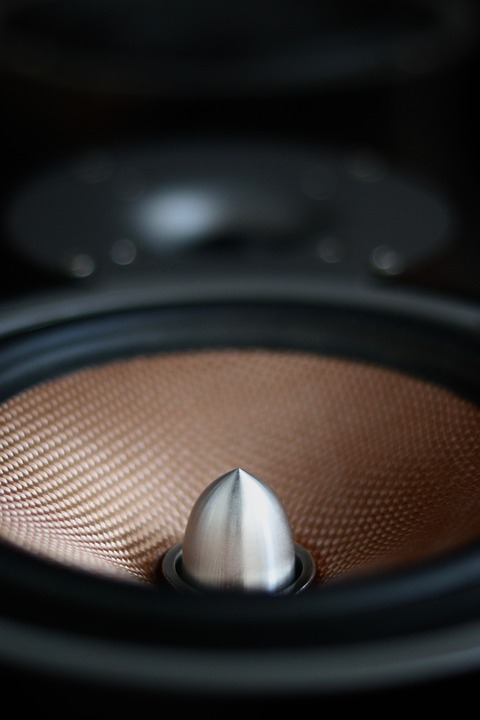Kicking Back: How Relaxation Affects the Nervous System
In our frenetic modern world, the concept of relaxation often feels elusive. With endless to-do lists and constant digital notifications, the ability to unwind can seem like a luxury we simply cannot afford. However, understanding how relaxation affects our nervous system is crucial not only for mental well-being but also for physical health. This article delves deep into the science of relaxation, its impact on the nervous system, and practical tips to incorporate effective relaxation techniques into our daily lives.
The Nervous System: An Overview
Structure and Function
The nervous system is a complex network responsible for transmitting signals between different parts of the body. It is divided into two main components:
- Central Nervous System (CNS): Comprised of the brain and spinal cord, the CNS processes information and dictates responses.
- Peripheral Nervous System (PNS): This includes all nerves that branch out from the brain and spinal cord, which are further classified into:
- Somatic Nervous System: Controls voluntary movements.
- Autonomic Nervous System (ANS): Regulates involuntary body functions, including heart rate and respiration.
The ANS is further divided into two segments:
- Sympathetic Nervous System: Responsible for the "fight or flight" response, activating your body to handle stressful situations.
- Parasympathetic Nervous System: Engages the "rest and digest" response, promoting relaxation and recovery.
The Balance Between Sympathetic and Parasympathetic Systems
The sympathetic and parasympathetic systems work in tandem to maintain homeostasis. In times of stress, the sympathetic nervous system triggers various physiological changes, such as increased heart rate and heightened alertness. However, prolonged activation can lead to chronic stress, adversely affecting health. This makes the parasympathetic system, which calms the body and conserves energy, vital for restoring balance and ensuring long-term wellness.
The Science of Relaxation
Physiological Responses to Relaxation
When we relax, our bodies undergo several physiological changes:
- Decrease in Heart Rate: The parasympathetic nervous system reduces heart rate, allowing the heart to function more efficiently.
- Lower Blood Pressure: Relaxation techniques may lead to a decrease in blood pressure, reducing the risk of cardiovascular diseases.
- Reduced Muscle Tension: Relaxation promotes the release of muscle tension, alleviating physical discomfort.
- Improved Digestion: The parasympathetic response enhances digestive processes, promoting better gut health.
Neurotransmitters and Hormones
Relaxation also affects the brain’s chemistry:
- Dopamine: Associated with pleasure, increased levels of dopamine during relaxation contribute to feelings of happiness and contentment.
- Serotonin: Often called the "feel-good" hormone, serotonin helps regulate mood and anxiety. Relaxation can enhance serotonin production.
- Cortisol: As the primary stress hormone, cortisol levels decrease during relaxation, reducing stress and anxiety.
The Importance of Relaxation for Mental Health
Stress and the Nervous System
Chronic stress can lead to various mental health disorders, including anxiety and depression. When the sympathetic nervous system is overstimulated, it can create a cycle of negative emotions and physiological responses. This can manifest as insomnia, irritability, and difficulty concentrating.
Relaxation as a Therapeutic Tool
Research has shown that relaxation techniques can be effective in treating stress-related disorders. These techniques help activate the parasympathetic nervous system, facilitating a range of mental health benefits:
- Reduced Symptoms of Anxiety and Depression: Mindfulness and relaxation exercises are proven to lower symptoms associated with anxiety and depression [1].
- Improved Concentration and Cognitive Function: Engaging in regular relaxation practices boosts attention and cognitive clarity.
- Enhanced Emotional Regulation: Relaxation promotes better emotional responses and resilience against stressful triggers.
Practical Relaxation Techniques
Incorporating relaxation into your life doesn’t require extensive time commitments or complicated processes. Here are some effective techniques you can easily integrate into your day:
1. Deep Breathing
Deep breathing is one of the simplest and most effective relaxation techniques. It helps to slow the heart rate and calm the mind.
How to Practice:
- Find a comfortable position, either sitting or lying down.
- Inhale deeply through your nose, allowing your abdomen to expand.
- Hold the breath for a few seconds.
- Exhale slowly through your mouth, emptying your lungs completely.
- Repeat for 5-10 minutes.
2. Progressive Muscle Relaxation (PMR)
PMR involves tensing and then relaxing different muscle groups, helping to release physical tension.
How to Practice:
- Start at your toes, tensing the muscles for a few seconds before relaxing them.
- Move upward through your body, focusing on each muscle group: calves, thighs, abdomen, arms, and face.
- Take deep breaths as you relax each muscle group.
3. Visualization
Visualization helps engage the mind in calming imagery, promoting relaxation and stress relief.
How to Practice:
- Close your eyes and take deep breaths.
- Picture a serene landscape, such as a beach or forest.
- Conjure the sights, sounds, and smells of this place.
- Spend several minutes immersed in this peaceful visualization.
4. Mindfulness Meditation
Mindfulness meditation encourages living in the moment, reducing anxiety about the past or future.
How to Practice:
- Sit in a quiet space with your eyes closed.
- Focus on your breathing and notice the sensations in your body.
- When thoughts arise, acknowledge them without judgment and gently bring your focus back to your breath.
5. Yoga and Tai Chi
Both yoga and tai chi incorporate movement, breath, and mindfulness, making them excellent for relaxation.
How to Practice:
- Join a class or follow online tutorials.
- Focus on your body’s movements and the sensations you feel.
- Engage in rhythmic breathing to enhance relaxation.
The Role of Lifestyle in Promoting Relaxation
In addition to dedicated relaxation techniques, certain lifestyle choices can promote a more relaxed state:
Physical Activity
Regular physical exercise increases endorphin levels, improving overall mood and reducing stress. Aim for at least 30 minutes of moderate exercise most days.
Healthy Nutrition
A well-balanced diet can have profound effects on mood and energy levels. Foods rich in omega-3 fatty acids, antioxidants, and complex carbohydrates can help stabilize mood.
Sleep Hygiene
Quality sleep is vital for stress management. Establishing a consistent sleep schedule and creating a restful environment can enhance relaxation and improve overall health.
Connection with Nature
Spending time in nature has been shown to lower stress and improve mood. Activities like hiking, gardening, or simply walking in a park can offer significant relaxation benefits.
Understanding Barriers to Relaxation
While relaxation is essential, many obstacles can impede our ability to unwind effectively:
Time Constraints
Busy schedules often leave little room for relaxation. However, even short moments of mindfulness can provide benefits.
Technology Overload
Constant exposure to digital devices can hinder relaxation. Consider setting boundaries around screen time, especially before bed.
Emotional Resistance
Some individuals may find it challenging to relax due to underlying emotional issues. Professional support, including therapy, can offer valuable insights.
Conclusion
Understanding how relaxation affects the nervous system is a powerful tool in enhancing mental and physical health. By incorporating effective relaxation techniques into daily routines and embracing lifestyle choices that promote well-being, individuals can foster a balance between the sympathetic and parasympathetic systems. In this age of constant stimulation, learning to kick back and prioritize relaxation may be one of the most important steps towards a healthier and more fulfilling life.
References
- [1] Goyal M, Singh S, Sibinga EM, et al. Meditation Programs for Psychological Stress and Well-Being: A Systematic Review and Meta-Analysis. JAMA Internal Medicine. 2014; 174(3):357-368.


























Add Comment